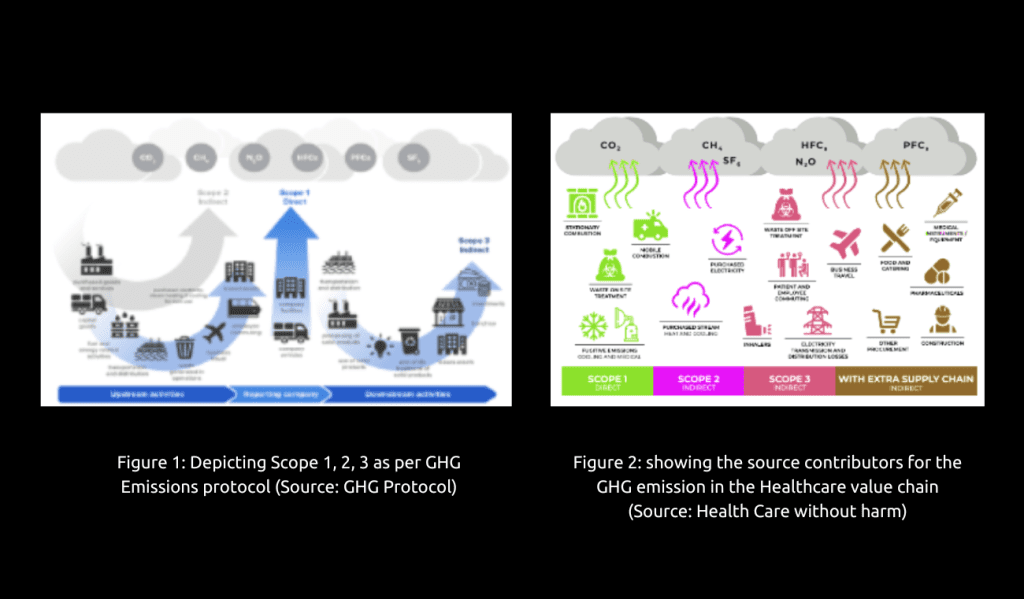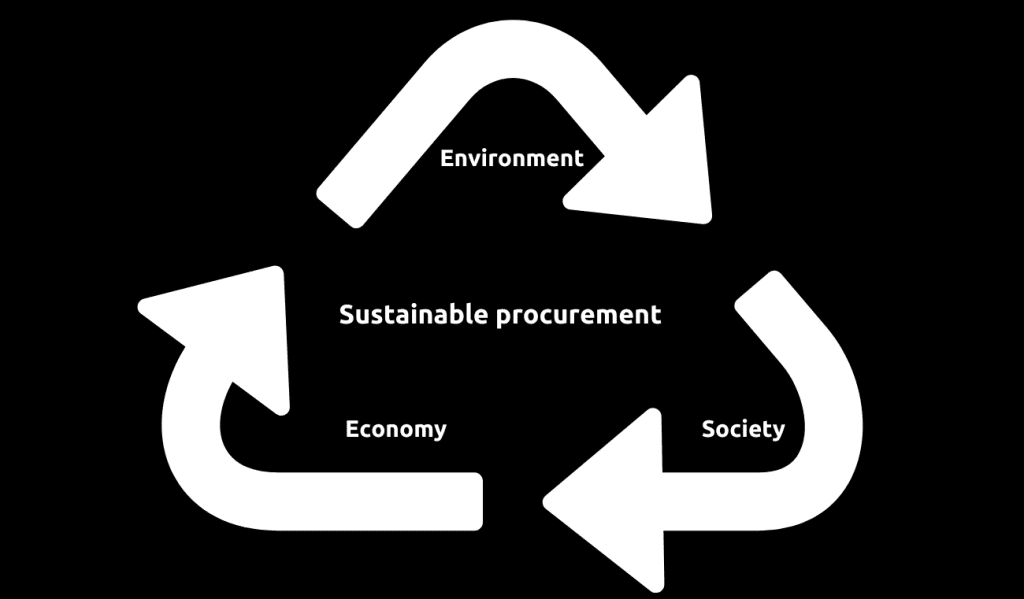Sustainable Procurement and its role in achieving planet, profit and people across the value chain
Read the Magazine in PDF
Abstract
Sustainable procurement in healthcare is a crucial approach to minimising environmental impact and achieving positive social outcomes. This article explores the economic benefits, social considerations, and environmental impact of sustainable procurement in healthcare. It highlights key strategies for implementing sustainable procurement practices and addresses challenges and barriers organizations may encounter. The health sector represents approximately 10% of global GDP and thus presents an opportunity to catalyze societal transformation beyond the scope of its operations. The delivery of health care is commonly considered a service. Still, it is both energy- and material-intensive and relies on a complex supply chain to source medical devices, supplies, drugs, and equipment. The healthcare sector is estimated to be the fifth largest polluter in terms of GHG emissions, with a measured impact of 4.4% of global emissions. It has increased to 5.2% since 2019, with the potential to be tripled by 2050 if no action is taken. 71% of the Greenhouse gas emissions come from scope three emissions requiring action not only from the Hospitals but from those who contribute to running the hospital’s operations like transporters, pharma & support manufacturers, energy distributors, service providers and others. Efforts of the WHO in driving “medication without harm” and enumerating strategies for combating climate risk, the century’s highest threat, are some of the top listed actions discussed. There is a considerable connection to combat climate risk, reduction in GHG and decarbonizing the healthcare sector with sustainable procurement. By adopting sustainable procurement practices, healthcare organizations can reduce costs, mitigate risks, promote responsible business, social responsibility, and contribute to a more sustainable future.
Introduction
Healthcare Emissions: The emissions globally from Healthcare are from direct and indirect sources and are enumerated to be scope 1(Direct), scope 2 (Indirect) and scope 3 (Indirect).

The contribution to the Healthcare footprint is distributed as Scope 1 – 17.5%, Scope 2 – 12.6%, Scope 3-70%. The large emissions coming from Scope 3 is attributed to emissions from production and transport, services, disposal of waste, food and agricultural products, medical devices, hospital equipment and instruments as depicted by Healthcare without Harm in below pic.
The healthcare sector must take responsibility for the reduction of footprint and be part of the solution to the growing climate emergency in addition to treating injured and ill people. This can be achieved by a detailed study of emission sources within the sector at the organisation’s level, reviewing the facilities, systems and supply chain, and making climate goals to achieve net zero emissions by 2050 or before. The organisation may take a scientific approach to achieving the goals, fix the science-based targets, apply for carbon disclosure programs, and gain credibility for their actions. To combat greenhouse gas emissions and be better prepared for Climate resilience, Sustainable procurement is a handy tool that enables the incorporation of environment, governance, and social elements into procurement processes, intending to minimize environmental impact and achieve positive social outcomes.
It surpasses financial considerations by benefiting the organization, the environment, and society. Consumers seek transparency in today’s sustainability-oriented era, while companies aspire to be leaders in Sustainability stewardship. There is a dire need for the Healthcare Industry to understand what Sustainability is and how it contributes to understanding this across the lifecycle. Adopting the (TBT) triple bottom principle of the United Nations needs a conceptualisation effort to relate themselves and how they can extend their influence over the value chain. Sustainable procurement enables businesses to showcase their dedication to sustainable practices—the practices based on the triple bottom principle depicted below.


Economic Benefits and Social Considerations of Sustainable Procurement
Sustainable procurement practices in healthcare offer significant economic benefits and social considerations that contribute to long-term success and positive societal impact. These are:
- It enables cost savings through resource efficiency by reducing energy consumption, waste generation, and water usage, resulting in lower operational expenses. This resource optimization enhances the financial viability of healthcare organizations.
- Sustainable procurement mitigates environmental, social, and governance risks, ensuring long-term financial stability and risk management.
- On the social front, it ensures ethical sourcing and fair labour practices by engaging suppliers who adhere to human rights standards and worker health and safety regulations.
- Sustainable procurement promotes diversity and inclusion by encouraging supplier diversity, supporting businesses owned by underrepresented groups, and fostering equity in the supply chain.
- It contributes to local communities and economic development by prioritizing local suppliers, creating job opportunities, and strengthening the local economy.

Environmental Impact of Healthcare Procurement
Healthcare purchases have a significant influence on the environment because:
- They increase waste production, water usage, energy use, greenhouse gas emissions, chemicals, and toxic materials.
- The transportation of commodities and the energy-intensive nature of healthcare operations result in significant greenhouse gas emissions.
- Land, water, and air pollution can come from ineffective waste management.
- Due to excessive water use and poor water management techniques, local resources are stressed.
Additionally, ecosystem services are in danger from using and disposing of chemicals and hazardous materials.
Healthcare organizations can use techniques like energy conservation, renewable energy sources, waste reduction and recycling programs, water conservation, and prioritising the purchase of environmentally friendly goods to solve these problems. The sector can help create a more sustainable future by reducing the environmental impact of healthcare procurement.
Critical Strategies for Implementing Sustainable Procurement in Healthcare
Implementing sustainable procurement practices in the healthcare sector is essential for reducing environmental impact, promoting social responsibility, and achieving long-term sustainability goals. Here are some key strategies that healthcare organizations can adopt:
- Establish sustainability goals and metrics: Set measurable targets to reduce environmental impact and promote social responsibility.
- Integrate sustainability into procurement processes: Incorporate environmental and social criteria into supplier selection and evaluation.
- Engage and educate stakeholders: Collaborate with internal teams and provide training to raise awareness and commitment to sustainable practices.
- Collaborate with suppliers and industry partners: Encourage suppliers to adopt sustainable practices and foster transparent, long-term relationships.
- Monitor and measure performance: Regularly assess and track environmental and social performance to identify areas for improvement and communicate achievements.
- Report: Choose to report your good practices through GRI, SASB frameworks through Sustainability or ESG reports.
Organizations may also choose to establish the framework for sustainable procurement using the ISO 20400:2017 framework, a noncertifiable voluntary framework to help companies implement practices systematically.
Overcoming Challenges and Barriers
Several obstacles and hurdles may arise while implementing sustainable procurement practices in the healthcare industry. These barriers must be removed for sustainable procurement principles to be adopted and integrated successfully. The following are significant obstacles to be overcome:
- Regulatory and compliance considerations: Stay updated on regulations and develop processes to ensure environmental and social requirements compliance.
- Financial constraints and budget limitations: Conduct cost-benefit analyses to demonstrate long-term economic benefits and prioritize investments in sustainable procurement.
- Resistance to change and organizational culture: Employ change management strategies, including education, communication, and stakeholder engagement, to foster a culture of sustainability.
- Limited availability of sustainable products and services: Engage with suppliers, advocate for sustainable alternatives, and collaborate with industry partners to expand the range of sustainable options.
The Future of Sustainable Procurement in Healthcare
The future of sustainable procurement in healthcare holds significant potential for environmental and social progress. Key trends include the impact of technology and digitalization, which can enhance transparency and efficiency in procurement processes. Integration with circular economy principles will enable healthcare organizations to achieve resource efficiency and minimize waste generation.
Industry-wide cooperation and knowledge exchange are essential for disseminating best practices and promoting group action. New sustainable materials, technologies, and procurement methods will also be developed due to investments in research and innovation. By seizing these possibilities, the healthcare industry may advance sustainability objectives and contribute to a more ecologically and socially responsible future.
This is being done in the following ways:
- US healthcare sector: Significant environmental impact, including greenhouse gas emissions, waste generation, and toxic chemicals. Sustainable procurement is crucial, with dedicated roles, data-driven processes, and technology integration needed for change and improved outcomes.
- Sustainable Health in Procurement Project (SHiPP): UNDP initiative, in collaboration with HCWH and funded by SIDA, aims to minimize the negative impact of medical product production, usage, disposal, and health programs.
- Europe: Sustainable procurement is vital for reducing healthcare’s environmental impact. Philips identifies five priority themes for public-sector purchasers: environmental reporting, circularity, transparency, digital solutions, and social impact.
- Canada: Green Hospital Procurement Guide promotes environmentally preferable purchasing (EPP). The inclusion of EPP language in tender documents and contracts is encouraged. EPP offers reduced environmental impact, cost savings, and improved worker safety. The guide provided by the Canadian Coalition for Green Health Care is a template for implementation and feedback.
- Geneva: The Geneva Sustainability Centre promotes accessible sustainability measures for healthcare. Their list of ‘no-regret’ initiatives offers low-risk, high-benefit options that any healthcare organization can implement. The guide is available for download to support planning and implementation efforts.
Tools for measuring Sustainability: while there are several ways of measuring how much my supply chain is prepared on the sustainability journey, independent assessments help the supply chain exhibit their commitment through scores achieved in independent reviews such as Ecovadis or Sedex. Ecovadis is an online assessment tool, while SEDEX is an onsite audit. Both have evaluations based on a checklist covering Environment, Human rights, Ethics and Sustainable procurement practices.
Conclusion
The healthcare sector has to use sustainable procurement as a critical instrument to decrease its environmental impact, encourage social responsibility, and meet long-term sustainability objectives. Healthcare organizations may save costs, and resources, lower risks, increase social impact, improve governance practices and support a more sustainable future by embracing sustainable procurement practices.
Implementing sustainable procurement in the healthcare sector is fraught with difficulties and roadblocks, but with proper preparation and execution, these obstacles may be surmounted. Healthcare organizations may make significant strides toward sustainability by utilizing the most recent technological advances and the ideas of the circular economy.
New environmentally friendly products, processes, and technologies will be developed with continuous investment in research and development, making it even more straightforward for healthcare organizations to lessen their environmental impact. The healthcare sector can create a more sustainable future by grasping these possibilities.
References
- Sustainable Procurement: What Is It and Why Does It Matter? (https://www.oxfordcollegeofprocurementandsupply.com/sustainable-procurement-what-is-it-and-why-does-it-matter/)
- What is sustainable procurement, and why is it important? (https://sievo.com/blog/sustainable-procurement-part1)
- Hart, J. (2022). Health Care Without Harm: Taking Environmental Action to Improve Lives and the Planet. Integrative and Complementary Therapies, 28(5), 251-254.
- Healthier Hospitals Initiative (https://greenhealthcare.ca/healthier-hospitals-initiative/#:~:text=The%20Healthier%20Hospitals%20Initiative%20(HHI,to%20create%20a%20guide%20for)
- The Legacy of Healthier Hospitals (https://practicegreenhealth.org/healthierhospitals)
- What is Sustainable Procurement? (https://www.deskera.com/blog/sustainable-procurement/)
- https://noharm-global.org/issues/global/sustainable-health-procurement-project
- https://noharm-europe.org/sites/default/files/documents-files/7186/2022-08-HCWH-Europe-Designing-a-net-zero-roadmap-for-healthcare-web.pdf
Authors
-

-

-

Head of Biomedical Engineering Department, CMC Co-Chair Engineers Forum
-




